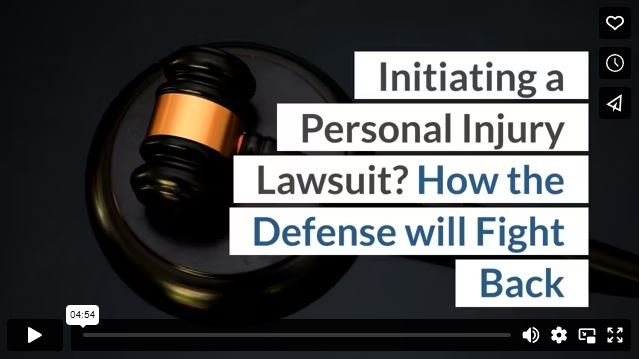When you file a personal injury lawsuit, you can expect to hear the defense raise these common arguments to limit or reject your claim. Understanding – even predicting – these arguments will help manage expectations and mitigate the emotional roller coaster of legal proceedings. Most importantly, expecting these counter arguments will help you and your attorney prepare to deliver the most robust case possible and collect the compensation you deserve.

(Daniel_B_photos / pixabay)
Split liability
One of the first arguments usually heard from the defense counsel is that the defendant is only partially responsible for the accident or the resulting injuries. The defending counsel may argue that they do not bear full liability.
Insurance companies and accident injury attorneys are accustomed to hammering out liability percentages and assigning an exact percentage to each party. The term for the resulting agreement is ‘split liability.’
Split liability means that more than one party was to blame for the accident and resulting injury. For example, in a car accident, one driver may receive 10% of the liability for exceeding the speed limit by 5 mph, while the other driver may receive 90% of the liability for crossing the centerline. Both the defendant and the plaintiff must agree on the terms and percentages of the split liability for it to take effect.
Consider a family in a minivan hit by a taxicab driver who was texting on his mobile phone. Although the distracted driver was clearly at fault for the accident, the family’s injuries were worse than necessary because none of them wore seatbelts at the time of the accident. In this case, liability was split 85% (distracted driver) and 15% (unbuckled family). The compensation awarded to the family was reduced by 15% because of the split liability agreement.
In most jurisdictions, a plaintiff may not sue for damages in a split liability case if the plaintiff has less than 50% liability. For example, if two cars are involved in a traffic accident and liability is split 60% and 40%, the driver liable for 60% of the injuries may not sue the driver responsible for 40% of the damages for compensation.
In five jurisdictions (Alabama, Maryland, North Carolina, Virginia, and the District of Columbia), a plaintiff may not sue for damages in a split liability situation. In these jurisdictions, even if the plaintiff is only responsible for a fraction of the liability, they may not collect damages from the defendant at all. For example, the unbuckled family hit by a distracted driver would not be able to sue for damages because they were found to be 15% liable for the resulting injuries.
No liability
Another common argument from the defense is that the defendant is not responsible at all for the injuries that occurred. In this instance, the defense acknowledges that an injury did, in fact, occur, but they argue that there is a lack of causation between the defendant’s actions and the injuries.
In a personal injury case, the plaintiff has the burden to provide evidence that the defendant was the actual cause of the injuries. The defense does not need to provide evidence that something or someone else caused the injuries; the burden of proof rests entirely on the injured party.
For example, if a gym member is injured while using gym equipment, she must provide evidence that the equipment was faulty or that she was given poor training instructions from a gym coach, which contributed to her injuries. Even if the defendant acted negligently, but some other event was the actual cause of the injuries, the defendant will not be liable. For example, if gym coaches lacked proper certification for the training programs they offered, but none of these coaches worked with the defendant, then the gym owners would not be liable.
Another common argument from the defense is that there is no actual injury. Without documentation from doctors, physical therapists, or police officers, photographs, records of missed work, the defense will argue that no evidence of injury exists.
Assumption of risk
In some personal injury cases, a defendant will argue that the plaintiff assumed the risk of injury by choosing to participate in the injurious activity. For example, if a plaintiff is injured while playing paintball, the defendant might argue that the plaintiff assumed the risk of paintball-related injuries when he decided to play.
To successfully avoid liability, the defendant must prove that the sustained injury is closely related to the risk that’s inherent in the activity. So if you are playing paintball, you’ve assumed the risk of getting hit with paint if one of your opponents successfully targets you — a common occurrence in a paintball war. Any resulting lawsuits would probably be dismissed because you assumed the risk of injury by deciding to play paintball.
On the other hand, if your injuries occurred when part of the paintball course collapsed, the defendant would be liable for your injuries. The defendant couldn’t argue that a falling wall is a risk that’s inherent to playing paintball.
Conclusion
Understanding how the defense is likely to respond will help you prepare your personal injury lawsuit. Causation, split liability, and assumption of risk are concepts that will be familiar to your Las Vegas accident lawyer. He or she will help you successfully navigate the process of filing a personal injury lawsuit, including collecting compensation to cover your medical expenses and disability.
Video

